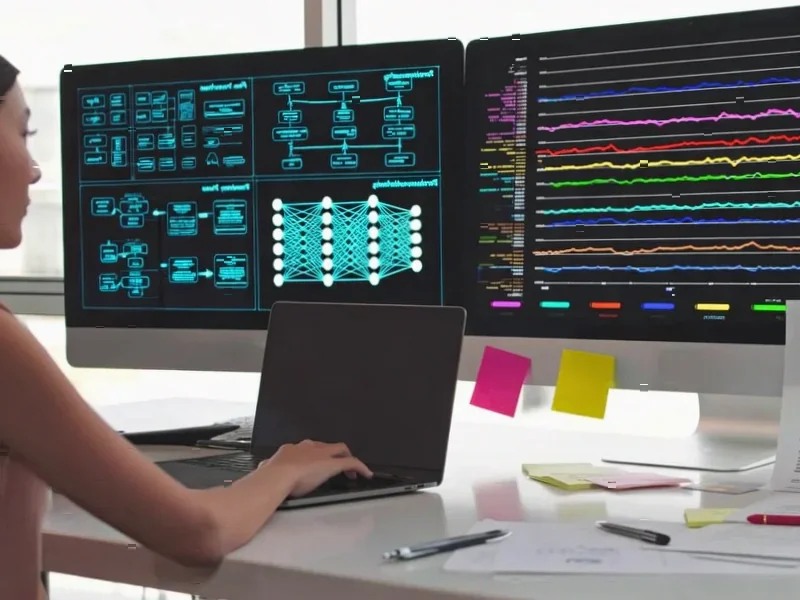According to Inc, Nvidia CEO Jensen Huang declared at the Financial Times Future of AI summit that “we are already there” when it comes to artificial general intelligence, while Meta’s Yann LeCun suggested AGI might arrive so gradually we won’t even notice it happening. The panel featured AI heavyweights including Geoffrey Hinton, Yoshua Bengio, Fei-Fei Li, and Bill Dally debating whether machines can now think at human levels. Elon Musk recently updated his AGI prediction to potentially arrive by the end of 2025 and estimated his Grok 5 system has a 10% chance of achieving it. Meanwhile, Bengio remained more cautious, saying the technology isn’t quite there yet despite no conceptual barriers. The discussion revealed significant disagreement among the very people building these systems about what constitutes AGI and when we’ll actually achieve it.
AGI’s Moving Target
Here’s the thing about AGI – nobody can agree on what it actually means. Jensen Huang basically says we’ve already got enough general intelligence to build useful applications, so the debate is academic. But Yoshua Bengio thinks we’re not quite there yet. And Fei-Fei Li makes a fascinating point – AI systems are built for different purposes than human intelligence. They can recognize 22,000 objects or translate 100 languages, but that doesn’t mean they think like us. It’s like comparing airplanes to birds – both fly, but completely differently. So when we ask “is AGI here?” we might be asking the wrong question entirely.
The Superintelligence Question
Now Geoffrey Hinton is already looking beyond AGI to superintelligence – machines that are considerably smarter than humans. He thinks within 20 years, if you have a debate with a machine, it will always win. That’s a pretty bold prediction. And we’re already seeing startups like Ilya Sutskever’s Safe Superintelligence and Mira Murati’s Thinking Machines Lab exploring this space. But here’s what worries me – if we can’t even agree on when AGI arrives, how will we know when we’ve crossed into superintelligence territory? It’s like trying to measure exactly when water starts boiling.
The Business Reality
Meanwhile, AI companies themselves seem less bullish than these academic leaders. OpenAI talks about AGI as a future milestone that might influence their IPO timing. And Elon Musk’s social media post about Grok 5’s 10% AGI probability feels more like marketing than serious technical assessment. The business incentives here are massive – being the company that achieves AGI first could mean dominating the entire technology landscape for decades. So when industry leaders make these declarations, we have to ask: are they describing technical reality or creating narrative momentum?
What Actually Matters
Bengio made the most practical point in the whole discussion – basing decisions today on where you think the technology will go is a bad strategy. AI has “a lot of possible futures” and trying to predict exactly when AGI arrives might be missing the point. The technology we have today is already transforming industries, creating new capabilities, and raising serious ethical questions. Whether we call it AGI or not, these systems are becoming increasingly capable. And that’s what actually matters for businesses, policymakers, and society right now. The label is less important than the impact.




